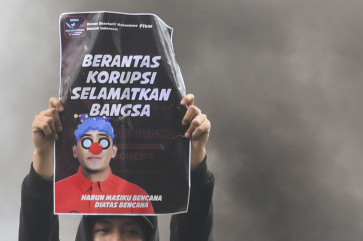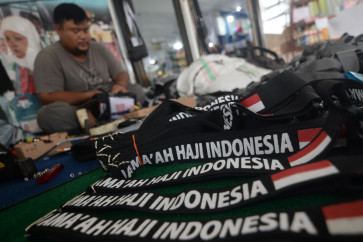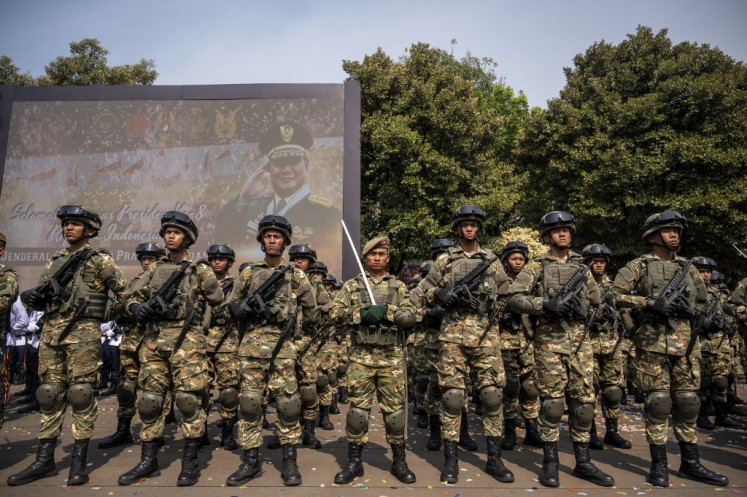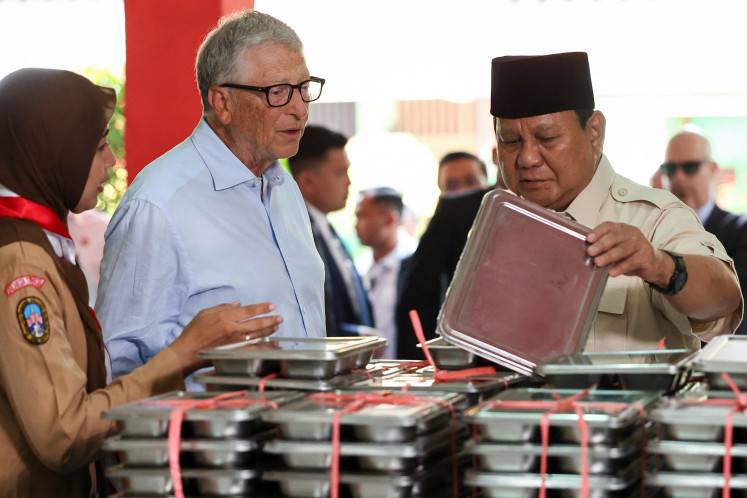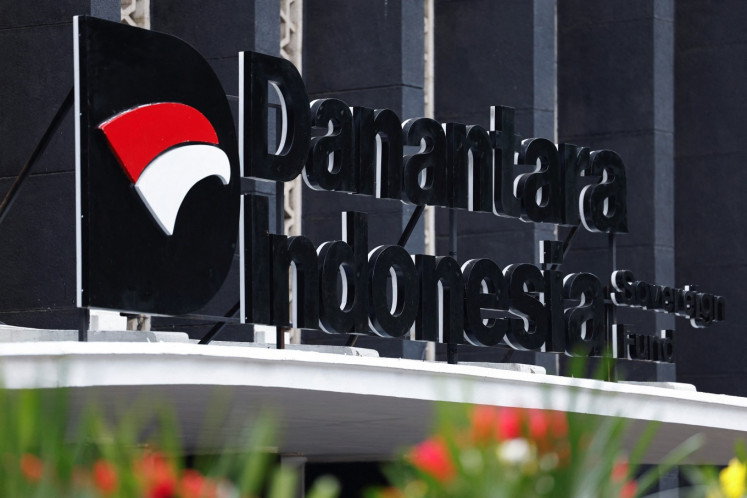President Jokowi’s small safe haven
The Bogor Palace
Change text size
Gift Premium Articles
to Anyone

The Bogor Palace.
In a corner of the Bogor Presidential Palace in Bogor, West Java, is a small house in which President Joko “Jokowi” Widodo lives in tranquility.
The Republic of Indonesia has had seven presidents and not all of them have opted to reside in a presidential palace.
First president Sukarno stayed at both the Jakarta and Bogor palaces compounds on various occasions.
Meanwhile, Sukarno’s successor, Soeharto, opted to live in his own home on Jl. Cendana in Menteng, Jakarta. After B.J. Habibie rose to the presidency following Soeharto’s resignation in 1998, he stayed in Kuningan, Jakarta.
Then, president Megawati Sukarnoputri prefered to live in Kebagusan, Jakarta and Susilo Bambang Yudhoyono in Cikeas in Bogor, West Java.
So far, only president Abdurrachman “Gus Dur” Wahid and President Jokowi picked an official presidential palace as a place to live while serving as chief executive.
Gus Dur occupied one side of the State Palace in Jakarta, whereas Jokowi prefers a house named Wisma Dyah Bayurini, which is located in a corner of the Bogor Presidential Palace complex.
Many people were stunned by Jokowi’s choice of Wisma Dyah Bayurini because of its very small size.
“The house is small, less suited to a president,” said Darmastuti Nugroho, a presidential palace executive.

The single-story house only has two bedrooms and a space arranged as a living room and sitting room, besides a small kitchen and terrace overlooking Mount Salak.
Nevertheless, Jokowi said the facilities in the house were more than enough for him and his wife, Iriana.
“This house is quite spacious for me. The bedrooms are even big. What’s more, its yard is adjacent to the Bogor Palace park. So, every morning I can see the mist and every time I can watch over deer,” Jokowi said.
Wisma Dyah Bayurini looks very dainty, especially when compared to the posh and massive domed Bogor Palace. The minimalist design of the house with outspread panes tends to be eclectic in contrast to the Bogor Palace’s classic Palladio style.
President Sukarno was the one who had the Wisma Dyah Bayurini built.
Construction began in 1958 when Sukarno wanted a pavilion in which to welcome the birth of a baby by his fourth wife, Hartini.
Sukarno and Hartini thought they were going to have a baby girl and had decided on the name Dyah Bayurini for her, so Wisma Dyah Bayurini translated into English means Dyah Bayurini’s home.
However, the baby turned out to be a boy, who was then named Bayu Sukarnoputra. As the name of the baby born was different from that already chosen for the house, the Dyah Bayurini pavilion project did not continue.
In 1964, Sukarno suddenly had a change of heart and decided to continue construction and use the pavilion as a place of relaxation for his family, as well as to complement Wisma Amarta, Wisma Madukara and some other houses built in 1954.

Sukarno appointed RM Soedarsono as its architect, but before it was finished Sukarno stepped down and was replaced by Soeharto. The Soeharto family liked the house as it was situated amid beautiful scenery, so they brought their grandchildren to stay there. A swimming pool was built next to the house to make it complete.
Soeharto resigned as president in 1998. Several of his successors made no use of this house. However, its condition has always been taken care of and well maintained.
Jokowi was elected president in 2014. He originally chose to stay at Wisma Negara in the State Palace complex in Jakarta, but in mid-February 2015 he moved to the Bogor Palace and into Wisma Dyah Bayurini.
In Wisma Dyah Bayurini, Jokowi lives comfortably alongside high quality artworks.
One of the house’s walls features Bangau-bangau Asean (Asean Storks), a painting by Indonesian master painter Basoeki Abdullah. On the other wall is a realist painting, Gadis Bali Menari (Balinese Dancing Girls). Its interior indicates that Jokowi and Iriana do not want contemporary or modern decorations. Part of its furniture comes from the periods of Sukarno and Soeharto, which make them seem unfashionable.
As Jokowi resides in the house, he has his office in the main building of the Bogor Palace, which was built by Dutch governor General Van Imhoff in 1745 and was called the Buitenzorg Palais.
The office room is the one formerly used by Sukarno as his workplace. Uniquely, the table, book cabinets, paintings and chair are those left behind by Sukarno. Jokowi receives visiting ministers in this room.
Beside the office is the sitting room for diplomats and heads of state from all over the world. This is a large room adorned with a painting by Konstantin Egorovich Makovsky entitled A Russian Traditional Wedding. The three-by-four-meter painting is a legacy from Sukarno. On each side of the image is one of the red-and-white national flags.
“It’s convenient to have his office there. Pak President only needs to walk from his house,” said Watie Moerany Santosa, who served as the head of household in the Bogor Presidential Palace for eight years.

— Photos by Agus Dermawan T.

